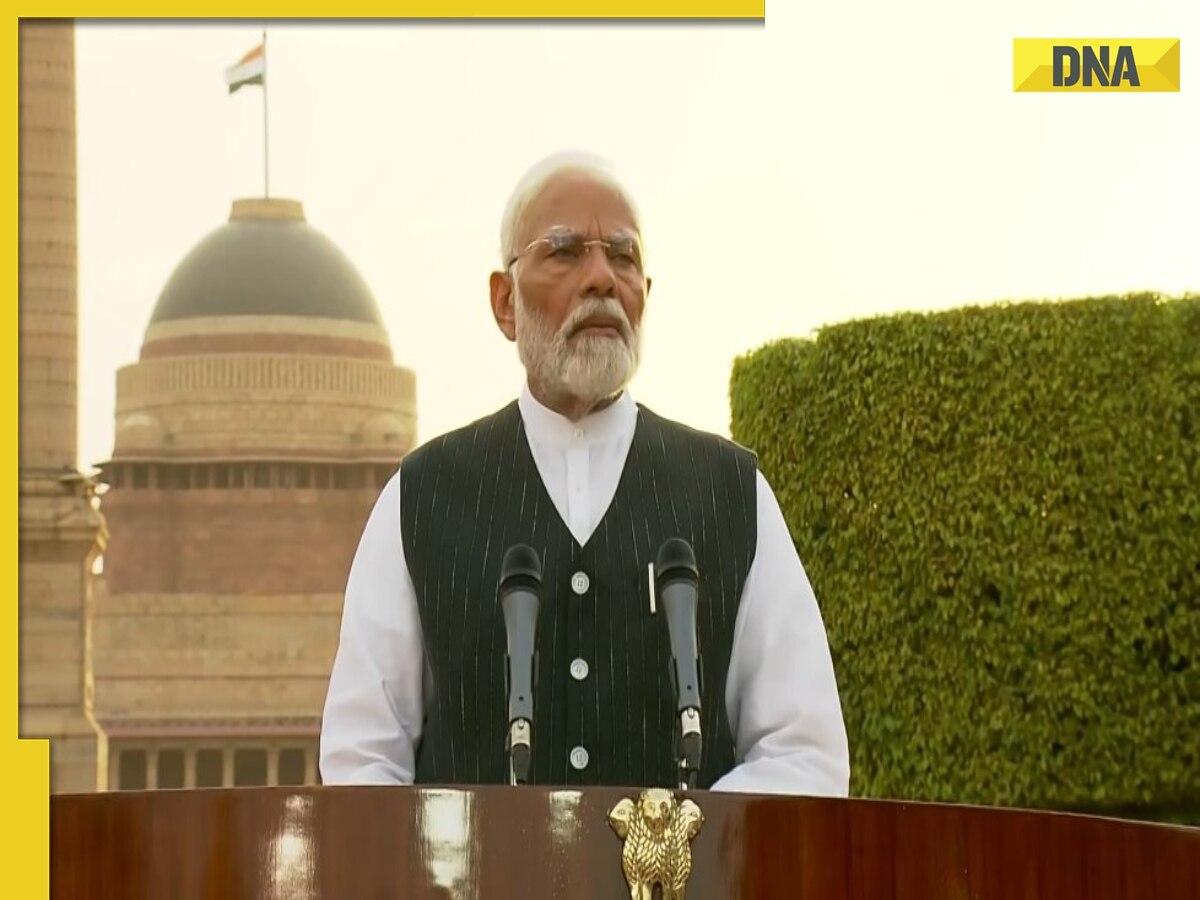
Prime Minister-designate Narendra Modi will be sworn in on Sunday for an unprecedented third consecutive term as the head of a coalition government. This marks a significant milestone, as Modi, 73, mirrors the historic achievement of first Prime Minister Jawaharlal Nehru, who secured consecutive victories in the 1952, 1957, and 1962 general elections.
The grand swearing-in ceremony is set to take place at 7.15 pm in the illustrious Rashtrapati Bhavan in New Delhi. Among the esteemed guests expected to attend are leaders from India’s neighboring countries and the Indian Ocean region. Confirmed attendees include Sri Lanka’s President Ranil Wickremesinghe, Maldives’ President Mohamed Muizzu, Seychelles’ Vice-President Ahmed Afif, Bangladesh’s Prime Minister Sheikh Hasina, Mauritius’ Prime Minister Pravind Kumar Jugnauth, Nepal’s Prime Minister Pushpa Kamal Dahal ‘Prachanda,’ and Bhutan’s Prime Minister Tshering Tobgay.
“The attendance of these leaders at the swearing-in ceremony of Prime Minister Narendra Modi for his third consecutive term is in line with the highest priority given by India to its ‘Neighbourhood First’ policy and ‘SAGAR’ vision,” stated the Ministry of External Affairs.
This marks a tradition of international participation in Modi’s oath-taking ceremonies. In 2014, leaders from the South Asian Association for Regional Cooperation (SAARC) attended his first swearing-in following the BJP’s substantial electoral success. The 2019 ceremony saw representation from the Bay of Bengal Initiative for Multi-Sectoral Technical and Economic Cooperation (BIMSTEC) nations, as Modi assumed office for the second term.
The guest list for the upcoming event extends beyond political dignitaries to notable figures from various walks of life. Surekha Yadav, the pilot of the Chhatrapati Shivaji Maharaj Terminus-Solapur Vande Bharat train in Maharashtra, is among the distinguished invitees. Alongside her, ten loco pilots from Indian Railways have also received invitations.
Officials have assured that all necessary arrangements for the guests have been meticulously planned, including designated enclosures for the council of ministers set to be sworn in and the Very Very Important Persons (VVIPs). The Rashtrapati Bhavan has shared visuals showcasing the preparations, which include a red carpet and seating arrangements in the forecourt.
In light of the event, security measures have been heightened across the national capital. Delhi Police has imposed prohibitory orders, and June 9 and 10 have been declared no-fly zones to ensure the ceremony proceeds without any disruptions.
Despite Modi’s successful retention of power, the BJP experienced an unexpected decline in its seat tally, which fell from 303 to 240 in the Lok Sabha polls, falling short of the majority mark of 272. This has led to intensified negotiations within the BJP and among its allies regarding the distribution of cabinet berths in the new government.
.
Senior BJP stalwarts such as Amit Shah, Rajnath Singh, and party president J.P. Nadda are holding discussions with coalition partners, including Telugu Desam Party’s N Chandrababu Naidu, JD(U)’s Nitish Kumar, and Shiv Sena’s Eknath Shinde, to finalize their representation in Modi’s government. There is speculation that key portfolios like home, finance, defense, and external affairs, along with education and culture — ministries of significant ideological importance — will be held by the BJP, with allies expected to receive between five to eight cabinet positions.
Prominent figures within the BJP, like Amit Shah and Rajnath Singh, are anticipated to retain their cabinet positions. Former Chief Ministers, including Shivraj Singh Chouhan, Basavaraj Bommai, Manohar Lal Khattar, and Sarbananda Sonowal, are strong contenders for ministerial roles. Allies such as Ram Mohan Naidu from TDP, Lalan Singh, Sanjay Jha, and Ram Nath Thakur from JD(U), and Chirag Paswan of the Lok Janshakti Party (Ram Vilas) are also expected to be part of the new cabinet.
The distribution of cabinet positions is expected to reflect regional considerations, particularly with upcoming assembly polls in Maharashtra in October and in Bihar next year. Additionally, impending organizational changes within the BJP, especially concerning J.P. Nadda’s term and potential new roles within the government, will influence the final makeup of the cabinet.
The desertion of some voters, particularly from the Scheduled Castes and other marginalized communities, is likely to impact the composition of the new government. Modi’s previous term saw efforts to increase their representation, which may continue in the upcoming term.
The opposition Congress has declared the election results to be a “moral, political, and personal defeat” for Modi, questioning the comparison to Nehru. Congress party general secretary Jairam Ramesh stressed that Nehru had secured a two-thirds majority in all three terms. In contrast, the BJP argued that Nehru faced minimal opposition, while this election showcased a competitive political landscape.
In conclusion, as Prime Minister Narendra Modi prepares to take his oath for a historic third term, the nation awaits a grand ceremony marked by significant international and domestic attendance. While the BJP consolidates its power, the reshaping of cabinet positions will play a critical role in addressing the challenges ahead. The ceremony will be closely watched both in India and abroad, symbolizing a new chapter in Modi’s ongoing leadership.












